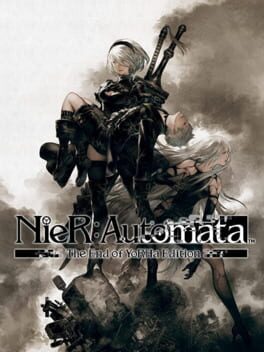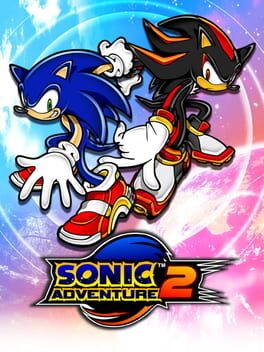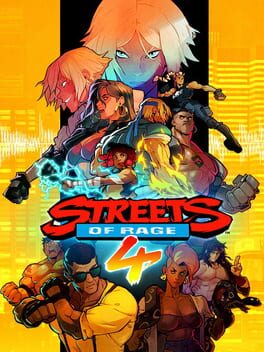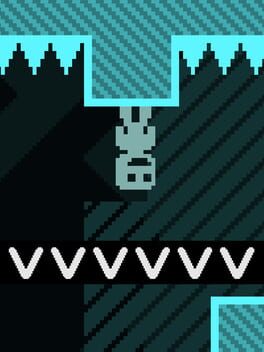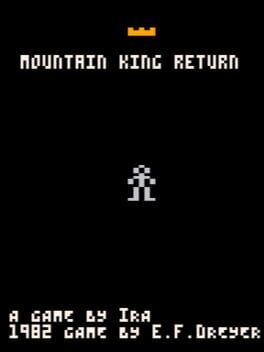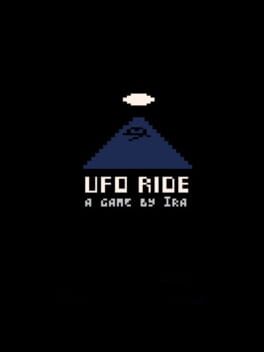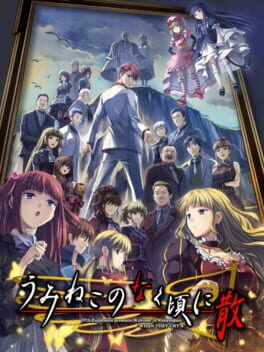deadlydonut
Bio
pt-br/eng/esp
1/5 - Hate it.
2/5 - Indifference/dislike towards it.
3/5 - Like it.
4/5 - Like it a lot.
5/5 - Love it.
pt-br/eng/esp
1/5 - Hate it.
2/5 - Indifference/dislike towards it.
3/5 - Like it.
4/5 - Like it a lot.
5/5 - Love it.
Badges

Gamer
Played 250+ games

GOTY '23
Participated in the 2023 Game of the Year Event

Famous
Gained 100+ followers

Pinged
Mentioned by another user

Busy Day
Journaled 5+ games in a single day

Trend Setter
Gained 50+ followers

Well Written
Gained 10+ likes on a single review

Donor
Liked 50+ reviews / lists

Best Friends
Become mutual friends with at least 3 others

3 Years of Service
Being part of the Backloggd community for 3 years

GOTY '21
Participated in the 2021 Game of the Year Event

Popular
Gained 15+ followers

Liked
Gained 10+ total review likes

Noticed
Gained 3+ followers

N00b
Played 100+ games
Favorite Games
271
Total Games Played
013
Played in 2024
025
Games Backloggd
Recently Played See More
Recently Reviewed See More
Too often I think we are chained by the systematization of concepts and sensibilities to truly grasp the way in which the vibrations and rendering of place and action can exist through digital spaces. Within a ten-minute text-adventure game on itch.io (constituted almost entirely of raw-text sentences on a blank wallpaper) I've intuited more textures and tastes of imagery and landscapes than any video-essay or structured analysis I've ever seen. Maybe it's a sort of cathartic and utopian awakening to touch a work that manages to portray this sort of ambiguity regarding the lens through we which we "feel" aesthetics in games (which is almost uncharted territory in terms of definition since we can't even manage to determine what 'game design' is) and not succumb to this cynic preposition of everything needing function and purpose through some sort of utilitarian perspective regarding "intention", that is, the sort of evaluation that seems to look at art from the outside instead of the inside, and I think that's the key point overall I'm trying to make. In order for something to "succeed" or to be "convincing" to one's understanding of art there's a certain undertone that implies a sort of staticity in our "digestion" of those experiences, a voyeuristic excitement at 'consuming' works that are, to our eyes, something that exists in our plane first and in their plane last.
"feelsgood" and "gamefeel" are wide-ranging adjectives I've seen be used in game criticism for a while in both bad and good connotation but we sometimes forget how those concepts of "crunchiness" or "pleasure" traverse for one person and the other. The popping little explosions of Kingdom Hearts' keyblade plummeting the enemy away like a ragdoll and Doom's shotgun ravaging its way through the fleshy insides of a demon is a very superficial comparison I'm making on the fly to demonstrate the differences in "feel" interactive fiction can create, but in that sense why do we tend to use this word as if it somehow systematized and encompassed all sorts of feel into a concept that can be 'good' or 'bad' depending on context? Sometimes it feels good to hit things. Sometimes it feels awful but it is also compelling. Sometimes a world can exasperate its breath through traversal and physical connection like Breath of the Wild does with its ephemeral assimilation of challenges and progression, and sometimes it can inspire action and improvisation on virtual architecture like Sonic Adventure, begging us to ramp and spindash through hubs and places that mechanically only exist to grant a sense of friction to movement, but inspire the imagination and playfulness of running through their skies, water and colors --- Sonic Adventure's "jank" gives these spaces life in the unpredictability of direction and speed. If there's one thing I learned with Video Game Feminization Hypnosis is that most things I love about games I love will probably remain unspeakable, verbalized mysteries until the day I forget what words mean and only feel the sunshine of Outrun 2's skybox peeling the anxiety of my mind through the sound of Magical Sound Shower. Until the day I can only remember the drifting piano of Breath of the Wild's biotic world orchestrating its digital stillness, like a God breathing on my shoulder while I move and slide aimlessly like a lost wanderer. Until I can only recall the melody of Demon's Souls' Nexus and the sound my footsteps raise when walking through the water mirror on its center. Until I can only reminisce about Proteus's singing flowers and its island that dances through optics and observation. Maybe that's why we write reviews and want our loves validated or to be seen as something 'higher', 'mightier', something complicated and mystical as the maths that reveal humanity the mysteries of the universe since centuries ago. We want answers we'll never be able to grasp as long as we try to analyze, and to analyze we need to lie in the exterior. We need to watch, study and patronize; we need to put these architectures and spaces into boxes and views of 'critique' and 'deliberacy'. We need to leave its heart and embrace the surfaces of technicality.
Maybe we should try to feel more, see more, hear more, sense more. To be inside those worlds and not inspect them, but love them. Or hate them. Or feel nothing. It'll always depend. But I don't want to pretend that I know anything anymore, I don't want to play jigsaw and piece it all together.
I've always questioned my taste for existing in spaces. In my dreams I'm often attached to the unearthly and chaotic logic that conducts the sights and people that I see in my own mind. I want more than anything to exist in places that can make me feel something about who I am or the people that surround me, I want to belong and to discover. I know that I want to not know, I want mystique; the dialectics of discovery, wonder and impermanence. Maybe that's why my favorite Super Marios are 64 and Galaxy, because I'll never forget how mysterious and dreamy the castle felt on my first way through in 64, expanding unto itself as if it had a life of its own; and I'll never forget how silent and empty the starred void could be in Galaxy, even if I couldn't traverse it --- picturing it through a looking-glass was enough to capture its scale in relation to Mario, its gravity pulling me with ease and swinging me around spheres as I grasped the cosmos' force beyond what I could jump on despite the universe looking so calm. Maybe that's why Danganronpa's claustrophobic and unworldly, exaggerated style of pink blood and flipping cardboard cut-outs resonated with my urge to pull the paper off the stage, exploring and gathering evidence towards nonsensical, absurd truths. It's not that I want to exist in worlds that make me forget I am here, but worlds that remind me how much there truly is in the unseen, between the lines of the material. Those hypnotizing physicalities we conjure of body, mind and soul. If we broke away from all the systems, equations and measuring, who knows what frontiers we could uncover.
"feelsgood" and "gamefeel" are wide-ranging adjectives I've seen be used in game criticism for a while in both bad and good connotation but we sometimes forget how those concepts of "crunchiness" or "pleasure" traverse for one person and the other. The popping little explosions of Kingdom Hearts' keyblade plummeting the enemy away like a ragdoll and Doom's shotgun ravaging its way through the fleshy insides of a demon is a very superficial comparison I'm making on the fly to demonstrate the differences in "feel" interactive fiction can create, but in that sense why do we tend to use this word as if it somehow systematized and encompassed all sorts of feel into a concept that can be 'good' or 'bad' depending on context? Sometimes it feels good to hit things. Sometimes it feels awful but it is also compelling. Sometimes a world can exasperate its breath through traversal and physical connection like Breath of the Wild does with its ephemeral assimilation of challenges and progression, and sometimes it can inspire action and improvisation on virtual architecture like Sonic Adventure, begging us to ramp and spindash through hubs and places that mechanically only exist to grant a sense of friction to movement, but inspire the imagination and playfulness of running through their skies, water and colors --- Sonic Adventure's "jank" gives these spaces life in the unpredictability of direction and speed. If there's one thing I learned with Video Game Feminization Hypnosis is that most things I love about games I love will probably remain unspeakable, verbalized mysteries until the day I forget what words mean and only feel the sunshine of Outrun 2's skybox peeling the anxiety of my mind through the sound of Magical Sound Shower. Until the day I can only remember the drifting piano of Breath of the Wild's biotic world orchestrating its digital stillness, like a God breathing on my shoulder while I move and slide aimlessly like a lost wanderer. Until I can only recall the melody of Demon's Souls' Nexus and the sound my footsteps raise when walking through the water mirror on its center. Until I can only reminisce about Proteus's singing flowers and its island that dances through optics and observation. Maybe that's why we write reviews and want our loves validated or to be seen as something 'higher', 'mightier', something complicated and mystical as the maths that reveal humanity the mysteries of the universe since centuries ago. We want answers we'll never be able to grasp as long as we try to analyze, and to analyze we need to lie in the exterior. We need to watch, study and patronize; we need to put these architectures and spaces into boxes and views of 'critique' and 'deliberacy'. We need to leave its heart and embrace the surfaces of technicality.
Maybe we should try to feel more, see more, hear more, sense more. To be inside those worlds and not inspect them, but love them. Or hate them. Or feel nothing. It'll always depend. But I don't want to pretend that I know anything anymore, I don't want to play jigsaw and piece it all together.
I've always questioned my taste for existing in spaces. In my dreams I'm often attached to the unearthly and chaotic logic that conducts the sights and people that I see in my own mind. I want more than anything to exist in places that can make me feel something about who I am or the people that surround me, I want to belong and to discover. I know that I want to not know, I want mystique; the dialectics of discovery, wonder and impermanence. Maybe that's why my favorite Super Marios are 64 and Galaxy, because I'll never forget how mysterious and dreamy the castle felt on my first way through in 64, expanding unto itself as if it had a life of its own; and I'll never forget how silent and empty the starred void could be in Galaxy, even if I couldn't traverse it --- picturing it through a looking-glass was enough to capture its scale in relation to Mario, its gravity pulling me with ease and swinging me around spheres as I grasped the cosmos' force beyond what I could jump on despite the universe looking so calm. Maybe that's why Danganronpa's claustrophobic and unworldly, exaggerated style of pink blood and flipping cardboard cut-outs resonated with my urge to pull the paper off the stage, exploring and gathering evidence towards nonsensical, absurd truths. It's not that I want to exist in worlds that make me forget I am here, but worlds that remind me how much there truly is in the unseen, between the lines of the material. Those hypnotizing physicalities we conjure of body, mind and soul. If we broke away from all the systems, equations and measuring, who knows what frontiers we could uncover.
Within the game's gorgeous open zones, windows of interaction with different manners of moving through the maps (using a stream of wind to get up a platform, using a fire skill to burn down vines, etc.) are often gatekept by a varied set of abilities acquired by leveling up certain attributes in favour of specific openings in the game's Affinity trees (which are unique for each Blade) --- the so called field skills are only but one of the many variables that rule how Blades you bond with will interact with traversal, combat and overall progression through the game. There is a notable contrast between the sprawling, natural and detailed zones of the setting and the slippery, awkward character movimentation through these same panoramas filled with markers and cluttering UI identifiers; an incongruity between the maximalist, megalomaniac numerical obsession of the matters in which players connect and interact with that virtual world, and the often terrain-based combat/navigation that constantly demands that you look around and look for gaps between the pixelated topography, to check if there's an unrelated enemy around who could aggro you and interrupt your chain of orbs, to topple a flying enemy and make it fall down after you make it to higher ground, to use rails, rocks or other common environment assets to cheese your way through battles by gaining distance from the enemy's aggroing and auto-attacking with a bitball or a cannon while their path is blocked by said asset, to make use of the game's many position-based Arts: these strategies are not exceptions, but constant thoughts and visualizations I had through the game's many, many encounters.
This friction between the 'artificial' and the 'pulsing', the 'constant' and the 'drifting', is what builds this game's main dialectics: in this made-up world of flamboyant designs destined to be made fun of or utilized for their visual and questionable appeal, of series of integers and technical rigidness bounding the player to a progression based on variables and array-based requirements, how do we achieve genuine connection between constructs that seem to attract inherent unseriousness and confusion? How do we break down the walls of 'artifices' between the player and the game? The answer could only be one: Rex, and his Salvager Code.
The panache and naivete of juvenile optimism, the shonen-esque confidence in all that exists and the resolve to make people smile. Within the bounds of its own artificiality and the signifiers used to construct its experience, Xenoblade Chronicles 2 somehow manages to weave a convincing force of sincerity through a world that is conducted by the forces of constants, arrays, dipping frames and uncertain dynamic resolution --- all of that which cannot be organically touched or interacted with, ends up crossing the walls of mechanicality unexplainably by the end of it all, finding expression and meaning in the most unexpected places. A boy and a girl make a promise to reach Paradise; the boy complies without knowing why, not even because of the fact she saved his life right beforehand --- for giving his life for a stranger is simply his spirit. A girl who fears her own power, shutting herself off for unspecified milennia; a boy who finds treasures in junk for a living, salvaging meaning and memories out of seamless clouds. In the friendship between Rex and Pneuma lies the game's final and most important dichotomy, the impossibility between eternity and remembrance, the way in which our selves are tied to our egos which are formed by the promises we make to each other, how one would rather die than be forgotten by the one they love and keep on going for infinity. Theirs is a relationship of light: uncertainness about oneself's purpose breed spontaneity and trust in that which shines the way forward. Shin had Metsu, Hana had Hikari; within the endless streams of lights we project when we break down the walls of artifices between us, we find identity and purpose.
In each of the game's varied landscapes, one sight tends to repeat itself: the view of Alrest's enormous World Tree, the promised spot that gives access to Paradise and God, peering at his creations above the sea of white. To find that these organic leaves sprouting from its head and that the wooden exterior of its large shell house a high-tech facility full of elevators and robot guards only intensifies the images that Alrest creates through gameplay: an ocean hiding before humanity's ruins in Morytha, the vistas of the clouds forming different shapes and patterns within the perspectives of each character, numerical catharsis and exploitation of the artifices as a means of visualizing the act of bonding and the struggle of moving forward by your own means. Connecting Arts and auto-attacks indefinitely, building up elemental spheres and breaking them with the collective power of strategized synchrony; the endless QTEs building up in the screen demanding timing and linking in this fascinating real-time turn-based system.
"I love this world because you're in it."
This friction between the 'artificial' and the 'pulsing', the 'constant' and the 'drifting', is what builds this game's main dialectics: in this made-up world of flamboyant designs destined to be made fun of or utilized for their visual and questionable appeal, of series of integers and technical rigidness bounding the player to a progression based on variables and array-based requirements, how do we achieve genuine connection between constructs that seem to attract inherent unseriousness and confusion? How do we break down the walls of 'artifices' between the player and the game? The answer could only be one: Rex, and his Salvager Code.
The panache and naivete of juvenile optimism, the shonen-esque confidence in all that exists and the resolve to make people smile. Within the bounds of its own artificiality and the signifiers used to construct its experience, Xenoblade Chronicles 2 somehow manages to weave a convincing force of sincerity through a world that is conducted by the forces of constants, arrays, dipping frames and uncertain dynamic resolution --- all of that which cannot be organically touched or interacted with, ends up crossing the walls of mechanicality unexplainably by the end of it all, finding expression and meaning in the most unexpected places. A boy and a girl make a promise to reach Paradise; the boy complies without knowing why, not even because of the fact she saved his life right beforehand --- for giving his life for a stranger is simply his spirit. A girl who fears her own power, shutting herself off for unspecified milennia; a boy who finds treasures in junk for a living, salvaging meaning and memories out of seamless clouds. In the friendship between Rex and Pneuma lies the game's final and most important dichotomy, the impossibility between eternity and remembrance, the way in which our selves are tied to our egos which are formed by the promises we make to each other, how one would rather die than be forgotten by the one they love and keep on going for infinity. Theirs is a relationship of light: uncertainness about oneself's purpose breed spontaneity and trust in that which shines the way forward. Shin had Metsu, Hana had Hikari; within the endless streams of lights we project when we break down the walls of artifices between us, we find identity and purpose.
In each of the game's varied landscapes, one sight tends to repeat itself: the view of Alrest's enormous World Tree, the promised spot that gives access to Paradise and God, peering at his creations above the sea of white. To find that these organic leaves sprouting from its head and that the wooden exterior of its large shell house a high-tech facility full of elevators and robot guards only intensifies the images that Alrest creates through gameplay: an ocean hiding before humanity's ruins in Morytha, the vistas of the clouds forming different shapes and patterns within the perspectives of each character, numerical catharsis and exploitation of the artifices as a means of visualizing the act of bonding and the struggle of moving forward by your own means. Connecting Arts and auto-attacks indefinitely, building up elemental spheres and breaking them with the collective power of strategized synchrony; the endless QTEs building up in the screen demanding timing and linking in this fascinating real-time turn-based system.
"I love this world because you're in it."

